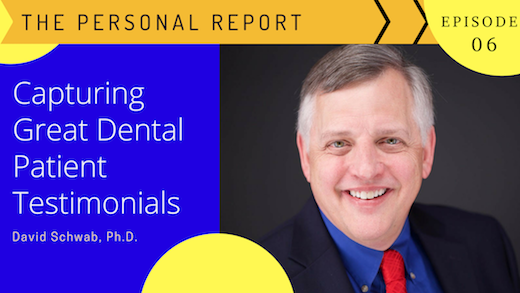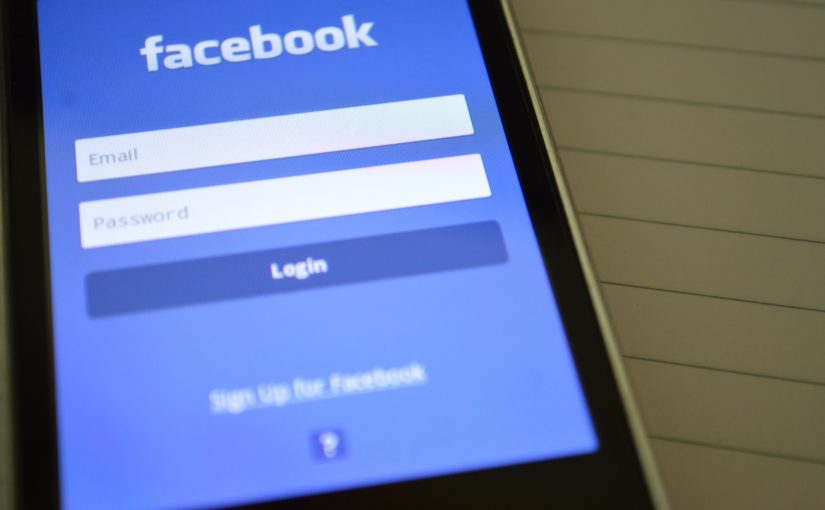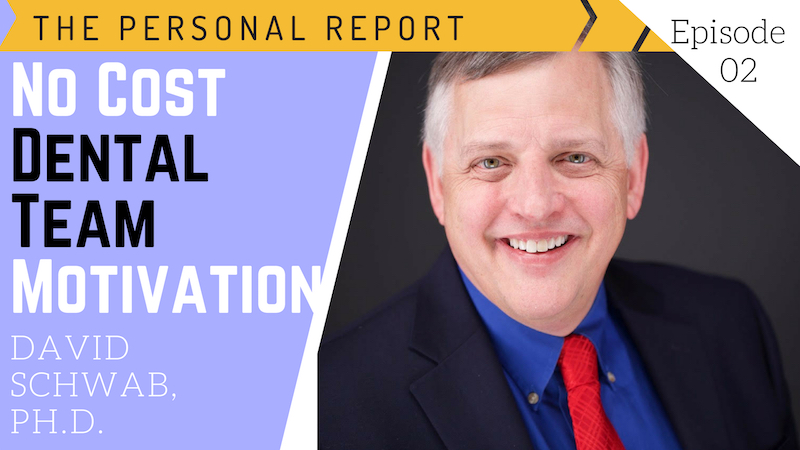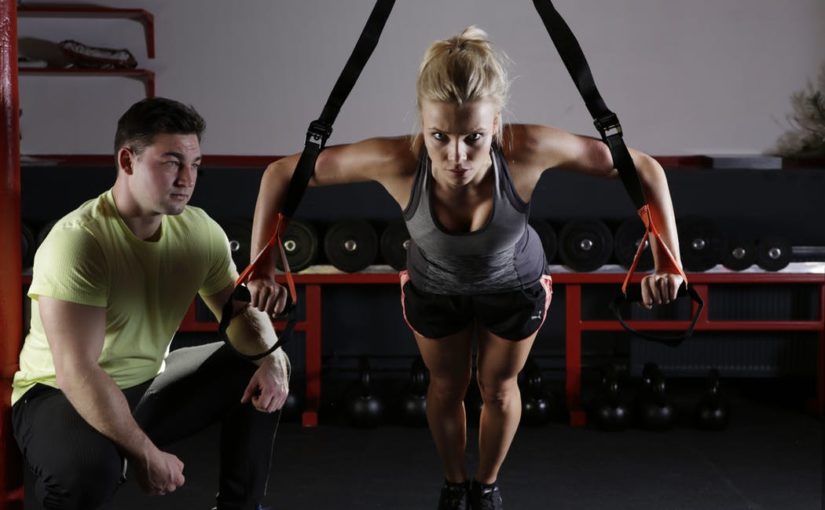Increase the Value of Your Dental Practice
Are you interested in reducing overhead?
Increasing production?
Increasing the value of your practice?
2020 Foresight: Three Ways to Increase Profitability
The year 2020 is not only a new year but a new decade. Here are three ways to increase profitability in your dental practice.
- Commit to larger cases. Demographic trends portend more older patients with increasing dental needs. There is also a growing market for orthodontics—for both children and adults. A restorative dentist told me recently that he has shifted his focus to larger cases. Although he has always had a commitment to comprehensive treatment planning, he is now explaining the benefits of treatment in more detail to patients. By changing the mix of services in his practice, he is now increasing revenue by spending more time on larger cases, which are inherently more profitable and more cost effective in term of hourly production.
- Train the Team. Practice often underestimate the synergistic effect of good team training. When team members are not sure how to proceed or what to say to patients in certain situations, patients may take the off ramp and park their decision-making process. Effective team training is focused and involves sufficient repetition and practice to make the new behaviors standard operating procedure.
- Follow Up. There are many patients who are not ready to commit to treatment on the spot. They need to be followed up in a low-key but methodical manner. Two ways to ensure proper follow up are to a) ask for permission, and b) establish a texting relationship with the patient. You ask for permission by using a script: “Would it be o.k. if we followed up with you?” Most patients grant this permission. When a team member calls, the script to use is as follows: “I am calling like we promised.” The call is not an intrusion, but the fulfillment of good customer service. Another way to reach out is with a text message: “It was great to see you. What questions do you have?” If you can establish a texting relationship with the patient, you break down barriers. The patient knows that if they have a question, all they have to do is send a text, and someone will respond.
There are so many patients who need your services. Make a commitment in 2020 to serve those patients and at the same time increase practice profitability.
Be sure to visit my website for information about new and updated seminars.
Capturing Great Dental Patient Testimonials
Great video testimonials are powerful because they engender trust. All advertising about is claims: we’ve got the best car repair place, we’ve got the best jewelry store, we’ve got the best dental practice; but is that true? If they can see you, if they can see you on video ahead of time, the credibility factor goes up tremendously.
Here is a list of some really good tips to capture those patient testimonials.
- Use a video camera, not your phone. It’s very tempting to use your phone. Cameras are made for this purpose and they do a much better job for you, and video cameras have dropped in price considerably.
- Use a tripod. You don’t have to spend a lot of money; you’re not trying to capture the wildebeest going across the plains of Africa. You just do not want the camera moving around–you want it to be fixed when you’re talking to that patient.
- Use an unobtrusive background. I’ve seen so many homemade videos where plants or plaques were growing out of people’s heads. It’s distracting. The best background for video testimonials is the one you never notice.
- The patient should be talking to an off-camera interviewer. If patients are told to look at the camera, they won’t do it. They not professionals, they’re not used to it, they start looking around, they look over here, they look over there. We had one lady whose eyes were darting all over the place. I call it the ferret video. She didn’t look trustworthy. Have the patient look at you, not the camera.
- The next tip is good lighting. Lighting is the hardest part of video, if you’ve got a spot in your office and you have figured out that you can put some lights there and make it a well-lit scene then always use it. Be careful also not to mix temperatures of light. Sunlight, fluorescent light, incandescent light—they all have different temperatures and they do not mix well. You want to have some consistent lighting to make the video look good.
- You want to have clear sound. I cannot tell you how many patient homemade testimonial videos I have watched that were hard to hear. There’s talking in the background, doors are slamming, you hear sounds of a high-speed, sounds of suction—and it’s all so distracting. The audio is what we call “muddy;” it’s hard to decipher. Making the audio crystal clear will really help your video.
- Edit the video. I don’t care how good you are, your raw footage needs editing. You don’t have to buy expensive video editing software. Just Google video editing software. There are many options and much of it is very inexpensive. And if you don’t want to do it yourself, ask any teenager because teenagers all make video projects in school and they know how to do it. You do not need Steven Spielberg. You’re just trying to say take this segment out, put this segment here–just to make it flow.
Video testimonials are so important to capture, and I’ve given you advice on how to do it. I go out to offices and we do welcome to the practice videos and patient testimonial videos. Click here for more information and samples. Call me if you want to know more; but if you want to do it yourself, these are great tips for you.
A video explaining how to create videos is available by clicking here.
How Dental Office Jobs are Changing
Dental office jobs are changing. What will dental administrative staff do in the future?
We know that the time spent on manual, time-consuming tasks such as making and confirming appointments and collecting payments is decreasing. Dental offices are using automated systems to confirm appointments via e-mail, text message, and computer-generated phone calls. Even the process of making appointments is undergoing a revolution. If people can make an appointment with a hairdresser or veterinarian using an app, then they want and demand to make dental appointments just as easily.
When it comes to collecting payments, the process of handing a plastic card to someone at a desk for processing is going the way of pegboard accounting systems. There are automated systems that allow patients to swipe their phone over a sensor. If it works for Starbucks, it also needs to be available in dental offices.
The new role for dental administrative staff is lead conversion. We are moving from an era of mass marketing to micro marketing. When I lived in Chicago, Swissair advertised on a major radio station every day. Their pitch was designed to entice people to buy a first-class ticket on Swissair from Chicago to Zurich. The problem was that over 99% of the listeners were a) not planning a trip to Switzerland, or b) wanted to find the best possible airfare, not pay for first class.
Utilizing the power of Facebook and other social media, you can target very precisely. Ad campaigns can be started and stopped at will, and the automated system can be designed to operate until a preset expenditure level is reached. There are many companies will expertise in this area. This type of target marketing is efficient—you reach people who are your target demographic—and the campaign does not have to be unduly expensive.
The problem is that when leads are generated, the individuals who work in dental offices often have little or no training in lead conversion. It’s not enough to be courteous and polite. Shoppers need to be educated about the practice in a structured yet low key and respectful manner. Going from inquiry to appointment takes training, experience, and persistence.
The good news is that those talented people who work in dental offices, now being freed from many manual tasks, are eminently trainable. They can and should be trained to respond to leads and turn as many as possible into new patients for the office. At least for now, those skills are beyond anything an app can do.
Beam Me Up, Scotty
When “Star Trek” premiered in the U.S. in 1966, the cost of a three-minute international phone call was about $12, which, adjusted for inflation, is $92 today.
Even in the 1980’s, when I was in graduate school, calling overseas was anything but cheap. I remember being in a hotel in Luxembourg as part of a work assignment for a bookseller and wanting to call home. The telephone table in the room was equipped with something akin to a taxi meter. When my overseas call to the U.S. was connected, the meter started clicking and turning. As the contraption shook, pens danced off the edge of the table.
The charges were calculated not in currency but in some unknown message units that started at 10,000. Every few seconds, the counter in the vibrating table would turn in increments of 2,500. After about two minutes, I had spent over 30,000 of these units, and I quickly ended my call. My employer paid the bill. I never learned exactly how much I had spent, but my boss made it clear that I was not to make any more calls during that trip.
I still travel frequently for my speaking and consulting business, but I also take advantage of video conferencing. There are platforms for webinars, which I have used very successfully, but I also really enjoy “virtual meetings” courtesy of services such as Skype.
In fact, when I train dental teams to use the best verbal skills, I often “beam in” to offices across North America via Skype. When participants are able to see and hear each other, we come very close to the experience of being in the same room. I marvel at the technology that allows me to be (virtually) in Texas at 2:00 p.m. and California at 3:00 p.m., which does not cost a penny more than what all of us pay anyway for our Internet connections.
During these sessions we cover verbal skills and other issues that come up in practices every day. If you would like valuable team training with zero travel cost, contact me for more information and we will make it so: dschwabphd@me.com.
No Cost Dental Team Motivation
No Cost Dental Team Motivation is the topic of Episode 2 of The Personal Report, which is now available on YouTube. To see the video, click here:
Here’s the transcript of Episode 2 on motivation.
We have a great topic for you today: No Cost Team Motivation. So, how do we keep the team motivated?
Well, let me just tell you a little story. Some years ago, I was involved in a focus group. Do you ever watch “Law and Order”? They watch through the glass and they’ve got somebody in the box and the people who are being interrogated can’t see you through the one-way mirror.
Well, a focus group works that way and we interviewed people who are in the dental profession, hygienists and assistants, and so forth, and asked them what motivated them. We actually divided them into two groups. We preselected them, through a survey, happy people and unhappy people. And it didn’t matter whether we interviewed the happy people or the unhappy people: when they made a list with the focus group facilitator about what motivated them, money was not number one. Oh, it was on the list, and it’s important, but it wasn’t number one.
You know what number one was? Praise, recognition, somebody cares, somebody noticed. So, the no cost way is to praise, but let’s be more specific about that, and when you give praise, always make it specific. Don’t just say, “Oh, you know, you’re wonderful,” or “Oh, I’m so happy you’re here.” That’s good, you need to say that, but make it more specific. “Yesterday, when the patient was starting to get upset, you handled it so well.” The other day the entire schedule was going to fall apart, but you got on the phone and we had a good schedule. The schedule is full–wow, what a great job!”
So you want to be very specific in your praise. We always say, praise in public, criticize in private. Now, you can praise in private, but if you happen to say it publicly, if you praise in public, if other people hear the praise, believe me, the person who’s hearing the praise, they’re not going to mind that other people know that somebody is getting praise and that they’re the one who’s being praised, because they did a good job for something specific.
Any criticism, though, has to be in private. No matter how mild the criticism, you want to really make that private, but that praise, specific praise, and public praise, are very, very important. And the next thing I will tell you is, don’t couch the praise; never use the word “but” when you’re praising.
Here’s what you don’t want to do: you don’t want to say, “You know yesterday, you stayed late, nobody asked you stay late, You took your initiative and you just did it without anybody asking and you got all the work done, but you know, if you were more organized, you wouldn’t have to stay late.” You’ve just taken it all away. First you were on a roll, you were saying all these good things, and then you added “but,” and here comes some criticism in underneath.
Praise is praise. “You did a great job.” Period. And let people know that. Now, if at another time, you need to talk to somebody on the side and say, “work on your organizational skills,” that’s a different story, but praise has to be specific and it has to be unqualified; we don’t want to say the word “but.”
Let me leave you with this thought: when I talk about praise, I can just hear all the staff out there saying, “yeah, I’ve got to get the doctor to watch this video. See, see, you should say nice things about us.” Okay, fair point, but I think that everybody on the team needs to praise other people on the team–when it’s deserved, of course. When somebody does something praise worthy, don’t be shy, tell them. And, by the way, sometimes even the doctor does something praise worthy and you can say something nice about him or her also.
I hope you’re enjoying the Personal Report. You know, I do have my Free Report; we’re getting a lot of good feedback. If you want a copy of the Free Report, “The Three Mistakes Every Dental Practice Must Avoid,” then just go to thepersonalreport@yahoo.com. Just send a quick email to thepersonalreport@yahoo.com and we’ll send you the Free Report.
You’re always, of course, welcome to contact me through my website, which is davidschwab.com. Thanks so much for watching The Personal Report.
You May Need a Coach If. . .
Great athletes need coaches. Great dentists need coaches, too. Take advantage of the free consultation offer below.
You may need a dental coach if:
- You are facing major decisions about the future of your practice. You are wondering if you should buy, sell, expand, cut back, or bring in another dentist. Ask yourself: Do I need a trusted confident, outside of my business and family—someone who can lead me to the right choices?
- You feel that your team needs more training. Ask yourself: Could targeted training for specific individuals improve their performance and help the bottom line?
- You are not sure if all team members “get it.” Ask yourself: Have I clearly and consistently communicated my expectations to my team?
- You feel that your practice has reached a plateau. Ask yourself: Am I feeling burned out? Or, do I have a lot of energy but just need direction?
- You think that case acceptance should be higher. Ask yourself: Am I using the best verbal skills and teaching my team to follow my lead? Do I have an effective follow-up protocol in place to prevent patients from “falling through the cracks”?
- You are feeling unsure about your management style. Ask yourself: As an employer, am I too harsh, too lenient, or just right?
- You are worried about overhead but you need more help at busy times. Ask yourself: Am I adequately staffed to provide outstanding customer service? Am I utilizing the full talents of everyone on the payroll?
If you answered yes to one or more of these questions—or if you have other issues that you would like to discuss in confidence with a highly experienced dental coach, please contact me.
Coaching services are conducted by phone consultations, in-person visits to the office, or both.
Free consultation. Contact me to schedule a free 30-minute telephone coaching session (limited time offer) so I can start helping you immediately. I promise to listen carefully and provide cogent, confidential advice.
Team Training That Makes a Difference
Team training for your dental team. Everyone talks about it, but how do you do it effectively? I was in Minnesota recently where I spoke at a study club meeting (fantastic turnout and enthusiasm!) and also had the privilege of doing a dental team training session for Centrasota Oral Surgery. What a great practice!
Part of the team training and team building involved using the Myers-Briggs Type Indicator (MBTI). There are many different personality assessment tools, but the MBTI has withstood the test of time. It has been validated over many decades.
I asked everyone on the dental team to complete the instrument online prior to the session. I then compiled the results, compared them to national statistics, and explained what the MBTI reveals.
During the session, we explored preferences—how people see the world, whether they are introverted or extroverted, and how different personality types relate to one another. The attendees were totally engaged in the process, and we had a number of “aha” moments when team members learned something about themselves and their colleagues.
The MBTI does not measure aptitude or intelligence. It fact, it does not measure anything, because, strictly speaking, it is not a test. The instrument identifies preferences. No one personality type is better than another, but the interaction among types is fascinating and insightful.
One of the most important takeaway messages from the session was specific advice on how to deal with the various types when they are under stress. If your coworker is totally stressed and having a bad day, what should you do or not do? By being aware of that person’s type, all team members can learn to deal appropriately with such situations. The result is more patience, understanding, tolerance, bonding—and, yes, team building.
There is one caveat. Too often people get information off the Internet about personality differences and jump into discussions without the proper background. I have been formally trained to administer the MBTI and facilitate meetings. The MBTI is an amazing tool, but it needs to be used in the right context and with a full explanation so that it is meaningful.
When administered with proper supervision, the MBTI provides insights into people that are useful for a lifetime. Many attendees in Minnesota left the team training meeting with a new understanding of themselves and their colleagues—and they immediately wanted their spouses and family members to take the instrument.
If you would like more information on how the MBTI can be used as a great dental team building tool, send an e-mail to drdavidschwab@gmail.com with MBTI in the subject line. Whether you have a small or large team, one office or many, the more you learn about how MBTI helps team training, the more you will want to learn.
Ultimate Secret of Practice Management
What is the ultimate secret of practice management? This blog is the final installment of my three-part series on how dental practices can learn from the phenomenal success of amazon.com. In the first part, I discussed the need for practice efficiency. The second lesson was about focusing on value, not price.
Another lesson from Jeff Bezos, founder of amazon.com, is a relentless emphasis on customer service. As with the other great tips from Mr. Bezos, however, we need to adapt that lesson from amazon to the practice of dentistry.
Everyone knows that the patient comes first, and customer service is already stressed in most dental practices. I interpret the customer service lesson to be much more nuanced than a general desire to be polite and friendly. Customer service in a dental practice occurs not only because team members have an intuitive sense of how to treat people well, but because they are well trained.
The third—and most important—lesson we learn from amazon is the ultimate secret of practice management—a relentless emphasis on team training. Continual training gives the team the specific tools they need to provide outstanding customer service.
Here are three great ways to train your team:
1. Ask for examples. At a team meeting, ask everyone to give examples of great customer service they have experienced themselves. Don’t ask for service horror stories. Keep the conversation and the lesson positive. Ask what happened, why it was so memorable, and how great customer service has a lasting impact on one’s relationship with a company.
2. Set the standard. In my next blog, I will discuss “sticky situations” that occur in dental offices and how to resolve them. The doctor and office manager need to tell team members what to say in challenging situations.
3. Use outside resources. I have a Team Training Video Series and I also provide training by phone, Skype, and in person. Having a team coach is a great way to keep everyone trained, focused and motivated.
There is another great benefit of team training. It’s the reason team training is the ultimate secret of practice management. Team training feeds the other principles we have discussed in this series. With proper training, practice efficiency soars. Also, when team members have the right verbal skills, they are able to communicate value for the dollar and move past the cost objection.
There is a synergistic effect among the three principles because they are mutually reinforcing and underpinned by the ultimate secret of practice management: continual, relentless, purposeful team training.
Click to access the following resources:
Efficiency: Part 1.
Value, not Cost: Part 2








